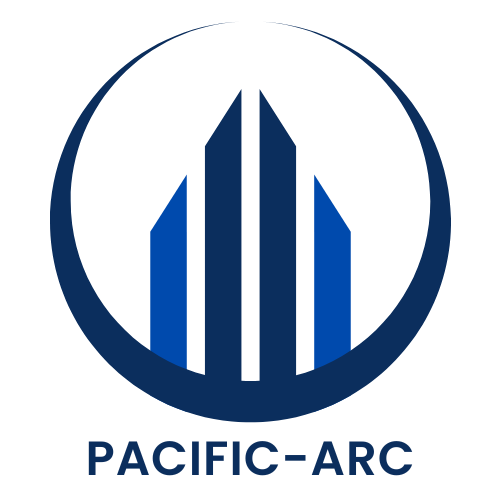Buying a home for the first time can feel like trying to find a unicorn in a haystack. The excitement of owning a place to call your own is often overshadowed by the daunting task of gathering a hefty down payment. Luckily, first-time buyers don’t have to go it alone. There are a treasure trove of down payment programs just waiting to be discovered.
Table of Contents
ToggleUnderstanding Down Payment Programs
Down payment programs provide essential support for first-time buyers navigating the homeownership journey. These programs offer financial assistance and resources to ease the burden of initial costs.
Types of Down Payment Assistance
Various forms of assistance exist to accommodate different buyer needs. Grants provide funds that don’t require repayment, while forgivable loans offer relief if occupants meet specific criteria over time. Matching funds can amplify savings, effectively doubling what buyers manage to set aside. Some programs even target specific demographics, such as teachers or military personnel, ensuring tailored support.
Benefits for First-Time Buyers
First-time buyers can gain significant advantages from down payment programs. Financial savings often lead to reduced monthly payments, helping with cash flow management. Strengthened purchasing power allows buyers to consider homes in more desirable neighborhoods. Access to educational resources can enhance buyer knowledge, empowering informed decisions. Improved loan terms may also result from using these programs, as lenders frequently respond favorably to applicants with assistance backing them.
Government Resources

Various government resources offer significant support to first-time homebuyers seeking down payment assistance. These entities provide crucial information and funding options tailored to specific needs.
Federal Programs
Federal programs play a vital role in assisting first-time buyers. The Federal Housing Administration (FHA) offers loans with low down payment requirements, often as low as 3.5%. Additionally, the U.S. Department of Agriculture (USDA) provides zero down payment loans for eligible rural properties. The VA also offers suitable options for veterans and active military personnel, often requiring no down payment. These programs emphasize affordability and accessibility, making homeownership achievable for many individuals.
State and Local Assistance Programs
State and local assistance programs contribute significantly to homebuyer support. Many states provide grants and forgivable loans aimed at first-time purchasers. Local governments often extend programs that focus on specific demographics, including teachers, healthcare workers, and first responders. Each program varies by region, offering targeted resources to cater to local needs. Buyers can typically find information about these initiatives on state housing authority websites or local government portals, streamlining the search for suitable assistance.
Non-Profit Organizations
Non-profit organizations play a significant role in assisting first-time homebuyers with down payment support. Many offer financial solutions to make homeownership attainable.
Community Development Financial Institutions (CDFIs)
CDFIs specialize in providing financial services to underserved communities. They often offer competitive interest rates and flexible terms. Programs available through CDFIs include grants, low-interest loans, and matched savings initiatives. Many CDFIs focus on educating buyers about the home buying process, empowering them to make informed decisions. Resources provided by these institutions enhance financial literacy, which leads to more sustainable homeownership.
Faith-Based Organizations
Faith-based organizations frequently offer down payment assistance programs. They may provide financial grants or interest-free loans to their communities. These organizations often collaborate with local governments and housing agencies to facilitate homeownership opportunities. Many faith-based groups also host workshops that educate buyers about budgeting and mortgage options. Community support and connections provided by these organizations create a nurturing environment for first-time homebuyers.
Online Resources
Numerous online resources exist to help first-time buyers find down payment assistance programs. These tools ensure access to vital information and support during the home-buying process.
Dedicated Websites and Tools
Websites such as DownPaymentResource.com feature databases of down payment assistance programs across the U.S. Individuals can search by state or local area, making it easier to identify available options. The HUD.gov site provides lists of state-specific assistance programs, offering detailed eligibility requirements. Additionally, tools like the Zillow app include filters that show homes compatible with specific assistance programs. Buyers benefit from these dedicated platforms by obtaining essential insights into various funding sources quickly.
Social Media Communities
Social media serves as a powerful tool for connecting buyers with down payment assistance resources. Groups on platforms like Facebook allow members to share personal experiences and recommend programs. Twitter users frequently discuss funding options, creating a community of support for first-time homebuyers. LinkedIn hosts professional groups focused on real estate and financing, where experts provide valuable advice and guidance. Engaging with these communities provides buyers with timely information and fosters a sense of belonging among fellow first-time buyers.
Tips for Navigating Down Payment Programs
Navigating down payment programs requires understanding the criteria and processes involved. First-time buyers should familiarize themselves with eligibility requirements, as not all programs suit every applicant.
Eligibility Requirements
Programs typically require specific conditions for acceptance. Income limits often apply, reflecting local housing markets. First-time buyers may find some programs tailored to certain professions, such as educators or healthcare workers. Geographic location can also influence eligibility, as many programs target specific regions. Providing documentation, such as proof of income and credit history, remains essential for assessing eligibility.
Application Process
The application process varies across programs but generally adheres to a similar structure. Buyers should begin by gathering necessary documents, like pay stubs and tax returns. Submitting an application often involves filling out detailed forms, which may require other supporting materials. Some programs offer online applications for convenience, while others may necessitate in-person visits. Monitoring application status is vital, as prompt responses can expedite the process. Following up with program representatives ensures all queries are addressed.
First-time homebuyers have access to a wealth of down payment assistance programs that can significantly ease their financial burden. By exploring federal, state, and local resources as well as non-profit organizations, buyers can find tailored support that meets their unique needs. Utilizing online platforms and community networks further enhances their chances of discovering valuable opportunities.
Navigating these programs may seem daunting at first, but understanding eligibility criteria and staying organized throughout the application process can lead to successful outcomes. With the right assistance, the dream of homeownership is not just attainable but also more manageable. First-time buyers should take advantage of these resources to embark on their journey toward owning a home.





